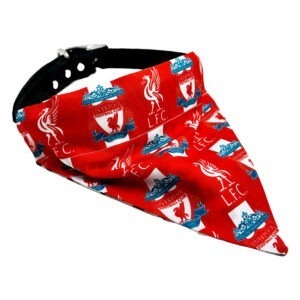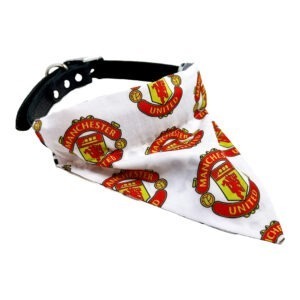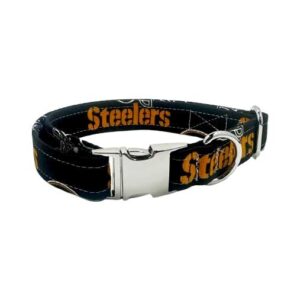A Labrador Retriever’s exuberant nature, combined with their expressive eyes and loyal demeanor, make them an irresistible companion for many. Ensuring they remain healthy and comfortable, however, goes beyond feeding them a balanced diet and providing regular exercise. Grooming plays an equally significant role in maintaining their overall health, happiness, and undoubtedly, their charming appearance.
Regular grooming not only keeps your Labrador looking good but also helps to check for any skin issues, parasites, or abnormalities that might need veterinary attention. Moreover, it helps manage shedding, a well-known characteristic of this breed, and strengthens the bond between you and your pet by spending quality time together. As a responsible pet parent, understanding and implementing a proper grooming routine is vital for your Lab’s well-being.
Understanding Your Labrador’s Coat
Known for their adaptability to various climates, Labrador Retrievers are blessed with a unique double coat that sets them apart from many other breeds. This double-layered coat comprises a soft, downy undercoat beneath a layer of short, dense waterproof topcoat. The undercoat serves as an insulator, providing warmth during cold weather, while the topcoat protects them from getting wet in water. Understanding these aspects is essential for effectively managing your Labrador’s grooming needs.
Some of our latest products...
-
犬用バンダナ
Liverpool FC Dog Bandana
$ 13.19 – $ 16.12 米ドル オプションを選択 この商品には複数のバリエーションがあります。 オプションは商品ページから選択できます -
犬用バンダナ
Manchester City Dog Bandana
$ 13.19 – $ 16.12 米ドル オプションを選択 この商品には複数のバリエーションがあります。 オプションは商品ページから選択できます -
犬用バンダナ
Manchester United Dog Bandana
$ 13.19 – $ 16.12 米ドル オプションを選択 この商品には複数のバリエーションがあります。 オプションは商品ページから選択できます -
During certain seasons, Labradors will “blow” their coat, which means they’ll shed their undercoat profusely. This is a natural process where your dog’s body responds to changes in daylight hours. Regular grooming can help manage this process, reducing the amount of fur you find around your home.
Essential Grooming Tools for Your Labrador
Arming yourself with the right tools can make grooming your Labrador an easier, more efficient process. Here are the key tools you should have in your grooming kit:
- Slicker Brush: This brush has fine, short wires close together. It is used to remove mats, loose fur, and detangle your Lab’s coat, ensuring it remains healthy and glossy.
- Undercoat Rake: This tool is specifically designed to penetrate through the topcoat and gently remove loose hairs from the undercoat. Using this regularly, especially during the shedding season, can significantly reduce the amount of fur found in your home.
- Nail Clippers or Grinder: Just like humans, dogs also need their nails kept at a comfortable length. Long nails can cause discomfort and can lead to problems with their posture and walking. You can choose between a clipper or a grinder, depending on what you and your dog are most comfortable with.
- Dog Shampoo: Labrador Retrievers have a waterproof coat, and using human shampoo can strip their coat of its natural oils, leaving it dry and itchy. Hence, always use a dog-specific shampoo.
- Ear Cleaning Solution: Labs love water, but their floppy ears don’t dry out easily, making them prone to ear infections. Using a vet-approved ear cleaning solution can help prevent this problem.
Step-by-Step Guide to Grooming Your Labrador
The grooming process doesn’t have to be complicated. Here’s a basic routine you can follow:
Step 1: Brushing – Brush your Labrador’s coat thoroughly using the slicker brush to remove loose hairs and detangle any mats. Start at their head and work your way down to their tail, always brushing in the direction of hair growth. Be gentle to avoid hurting your dog or damaging their coat.
Step 2: Bathing – Labs are known for their love of water, which makes bath time fun! Remember to use dog-friendly shampoo and water at a comfortable temperature. Be careful to avoid getting water in their ears and soap in their eyes. Rinse thoroughly to ensure no soap residue remains.
Step 3: Drying – It’s important to dry your Labrador thoroughly after bathing. You can towel-dry them and let them shake off the excess water. If your Lab tolerates it, you can use a hairdryer on the lowest heat setting.
Step 4: Nail Trimming – If you can hear your Lab’s nails clicking on the floor, it’s time to trim them. Use a clipper or grinder and be careful not to cut into the quick, as it can cause pain and bleeding.
Step 5: Ear Cleaning – Regular ear checks and cleanings are essential, particularly for water-loving Labradors. Use a vet-approved ear cleaner and cotton balls to gently clean the inside of their ears. If you notice a strong odor or discharge, consult your vet.
Handling Your Labrador During Grooming
Patience is key when grooming your Labrador, especially when they’re new to the process. Start by slowly introducing grooming tools, letting your dog sniff and get comfortable with them. When brushing, start gently and gradually increase the pressure as your Lab gets used to it. Avoid any sudden or harsh movements which might startle or scare them.
Make grooming a positive experience by giving plenty of praise and treats, especially when they remain calm and cooperative. Over time, they’ll learn to associate grooming with positive reinforcement, making it a pleasurable experience for both of you.
Making Grooming a Positive Experience
To make grooming a positive experience for your Lab, consistency is key. Regular, short grooming sessions can be less stressful for your dog than sporadic, lengthy ones. Try to schedule grooming sessions at a time when your Lab is usually calm and relaxed, such as after exercise. This makes them more likely to stay still during grooming.
Using positive reinforcement techniques such as giving treats, praise, or toys can help your Lab develop a positive association with grooming. Over time, your Lab will start to view grooming sessions as enjoyable bonding time with you, rather than a chore.
Grooming Your Labrador Puppy
Introducing your Labrador puppy to grooming early is vital. Puppies are naturally curious, and early experiences can shape their reaction to grooming in adulthood. Keep grooming sessions short, and turn them into a fun game. This can involve letting your puppy play with the grooming tools to get used to them, followed by gentle brushing.
Remember, the idea is to get them used to being touched all over their body, especially sensitive areas like the ears, paws, and tail. Always end grooming sessions on a positive note, with plenty of praise and a small treat.
Common Grooming Mistakes to Avoid
While grooming your Labrador, it’s crucial to avoid certain common mistakes:
- Overbathing: Labradors do not require frequent baths. Overbathing can strip their coat of natural oils, leading to dry and itchy skin.
- Neglecting the Ears: Given their love for water, Labs are prone to ear infections. Regular ear cleaning is crucial to avoid this.
- Not Brushing Regularly: Brushing not only removes loose fur but also spreads natural oils throughout the coat, keeping it healthy. Try to brush your Lab a few times a week, or even daily during shedding seasons.
- Cutting Nails Too Short: Cutting into the quick can cause pain and bleeding. If you’re unsure, it’s better to leave the nails a little longer or seek professional help.
Seasonal Grooming Needs of Your Labrador
A Labrador’s grooming needs change with the seasons. In spring and fall, your Lab will shed their undercoat, also known as “blowing their coat”. During these periods, more frequent brushing can help manage shedding. In the hot summer months, make sure to provide plenty of fresh water and shade, and avoid walking on hot pavement which can damage their paw pads. During winter, inspect your Lab’s paws regularly for any signs of cracking due to cold weather, and rinse their paws after walks to remove any salt or chemical de-icers that could cause irritation.
結論
Proper grooming goes a long way in maintaining the health and happiness of your Labrador Retriever. It’s much more than just keeping them looking good; it’s about promoting their overall well-being. By understanding your Lab’s unique coat, equipping yourself with the right tools, and adopting a consistent grooming routine, you can ensure your Lab stays comfortable, healthy, and happy. And remember, grooming is a wonderful opportunity to bond with your pet, a time for you to express your care and love for them. So embrace the process, and you’ll find that it not only enhances your Lab’s life but enriches yours as well.
よくある質問
1. How often should I bathe my Labrador Retriever?
While it depends on your individual dog’s lifestyle and activities, generally, a healthy adult Labrador Retriever should be bathed once every two to three months. Overbathing can strip the coat of its natural oils, causing dryness and irritation. However, if your Lab enjoys outdoor activities and frequently gets dirty, you might need to bathe them more often.
2. My Labrador sheds a lot. How can I manage this?
Labradors are known for shedding, especially during the shedding seasons of spring and fall when they “blow” their undercoat. Regular brushing, a few times a week or even daily during shedding seasons, can significantly help manage shedding. Using a slicker brush or an undercoat rake can effectively remove loose fur and minimize the amount of hair that ends up around your home.
3. What should I do if my Lab hates being groomed?
Start by making grooming sessions short and positive. Use treats, toys, or praise to make the experience more enjoyable for your Lab. Gradually increase the grooming time as your Lab becomes more comfortable. If your dog continues to resist or seems extremely uncomfortable, it may be beneficial to seek help from a professional groomer or a behaviorist.
4. How often should I clean my Labrador’s ears?
Ear cleaning frequency can vary based on your Labrador’s activities and their propensity to ear infections. If your Lab frequently swims or has a history of ear infections, weekly ear cleanings might be necessary. For other Labs, cleaning once a month can be sufficient. Always consult your vet if you’re unsure or if you notice signs of an ear infection such as redness, a strong odor, or unusual discharge.
5. How often should I trim my Labrador’s nails?
The frequency of nail trimming can depend on how quickly your Labrador’s nails grow and their lifestyle. Dogs that walk frequently on hard surfaces may naturally wear down their nails and require less frequent trimming. Generally, if you can hear your Lab’s nails clicking on the floor, it’s time to trim them. This could mean anywhere from every two weeks to once a month. If you’re uncomfortable doing this yourself, a professional groomer or a vet can help.





